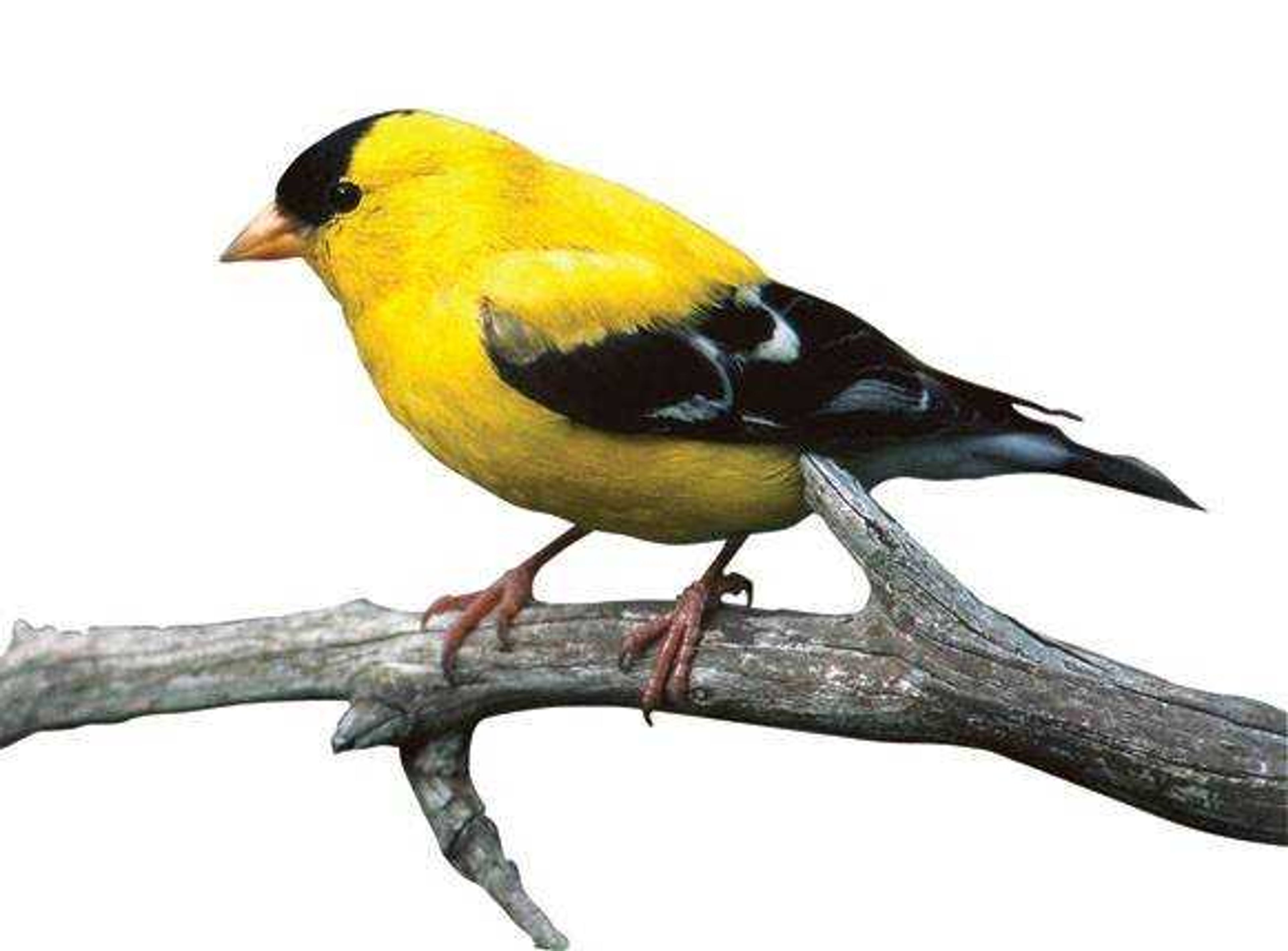This fall, several amateur birdwatchers asked me what happened to the goldfinches. They hadn't seen any at their feeders for a while. Now more recently, I have heard reports they are back. So where did they go?
The American goldfinch, the yellow streak you often see along ecological edges between open fields and open woods, is a migratory bird that moves south in the winter and north in the summer. This general north-south migration is a response to the seasons.
In addition to seasonal migration, there is a nondirectional movement dictated by the availability of small seed, their almost exclusive food source. If they find more abundant seed in other areas, they will move to that location.
The American goldfinch has a beak that is specifically designed to crack open the coating around seeds so they can get to the seed heart. Unlike many of its relatives, the American goldfinch is almost exclusively a seedeater, even during nesting. Because of their affinity for seed during the entire year, you can easily attract them to your backyard bird feeder.
The standard seed used to attract the American goldfinch is nyjer seed. This thistle seed, imported from India, seems to be their favorite backyard fare. Because the seed is small, you should purchase a feeder that is specifically designed to dispense nyjer seed.
Nyjer feeders have a small port through which a finch can extract one seed at a time from the feeder. The port must be small or the small nyjer seed will pour out on the ground.
Most nyjer feeders are tube-style feeders with a perch just below the seed port. If you find the more aggressive house finches are frequenting your feeder and running off your more favored American goldfinches, then purchase an upside down feeder. This feeder has the perch above the seed port. The American Goldfinch will readily feed while perched upside down, while the house finch tends to shy away from this feeder style.
Another commonly used nyjer feeder is a sock feeder. The finch will perch on the mesh of the sock while picking out one seed at a time.
If you don't want to invest in another feeder, use any style feeder that you have and fill it exclusively with black oil sunflower, another seed favored by the American goldfinch. Just realize that this fare attracts many other backyard songbirds, so your population of finches will have to learn to share.
Another way to attract the American goldfinch is by planting ornamental grasses or perennials that are members of the composite family. Just remember that you can't cut off the grass or perennial seed heads until the finches have had a chance to strip them of seed.
You can also plant holly, winterberry, pyracantha and small apple varieties of crabapple. These seed-bearing shrubs and small trees are another favorite of the American goldfinch.
Send your gardening and landscape questions to Paul Schnare at P.O. Box 699; Cape Girardeau, Mo. 63702-0699 or by e-mail to news@semissourian.com.
Connect with the Southeast Missourian Newsroom:
For corrections to this story or other insights for the editor, click here. To submit a letter to the editor, click here. To learn about the Southeast Missourian’s AI Policy, click here.










